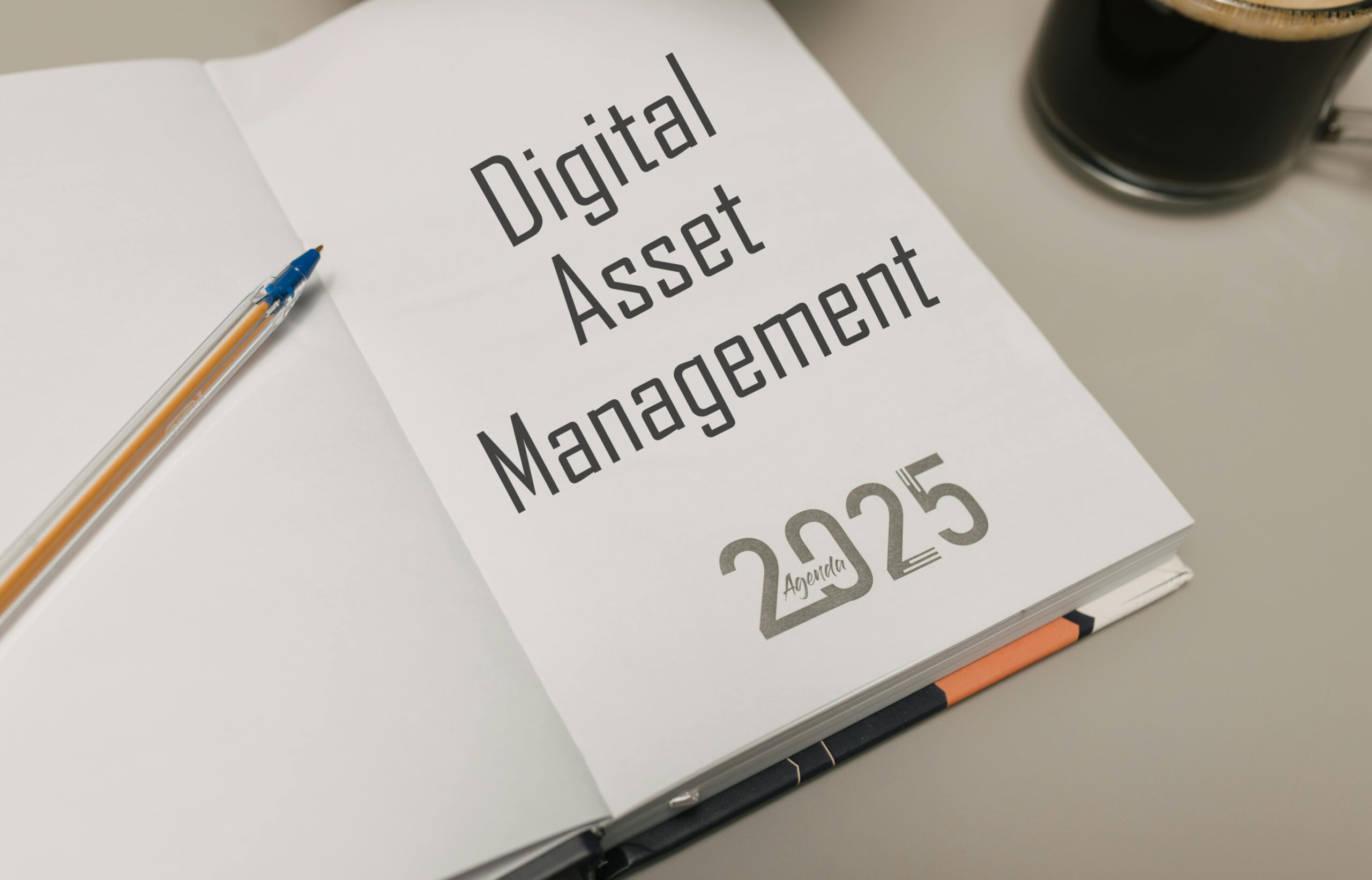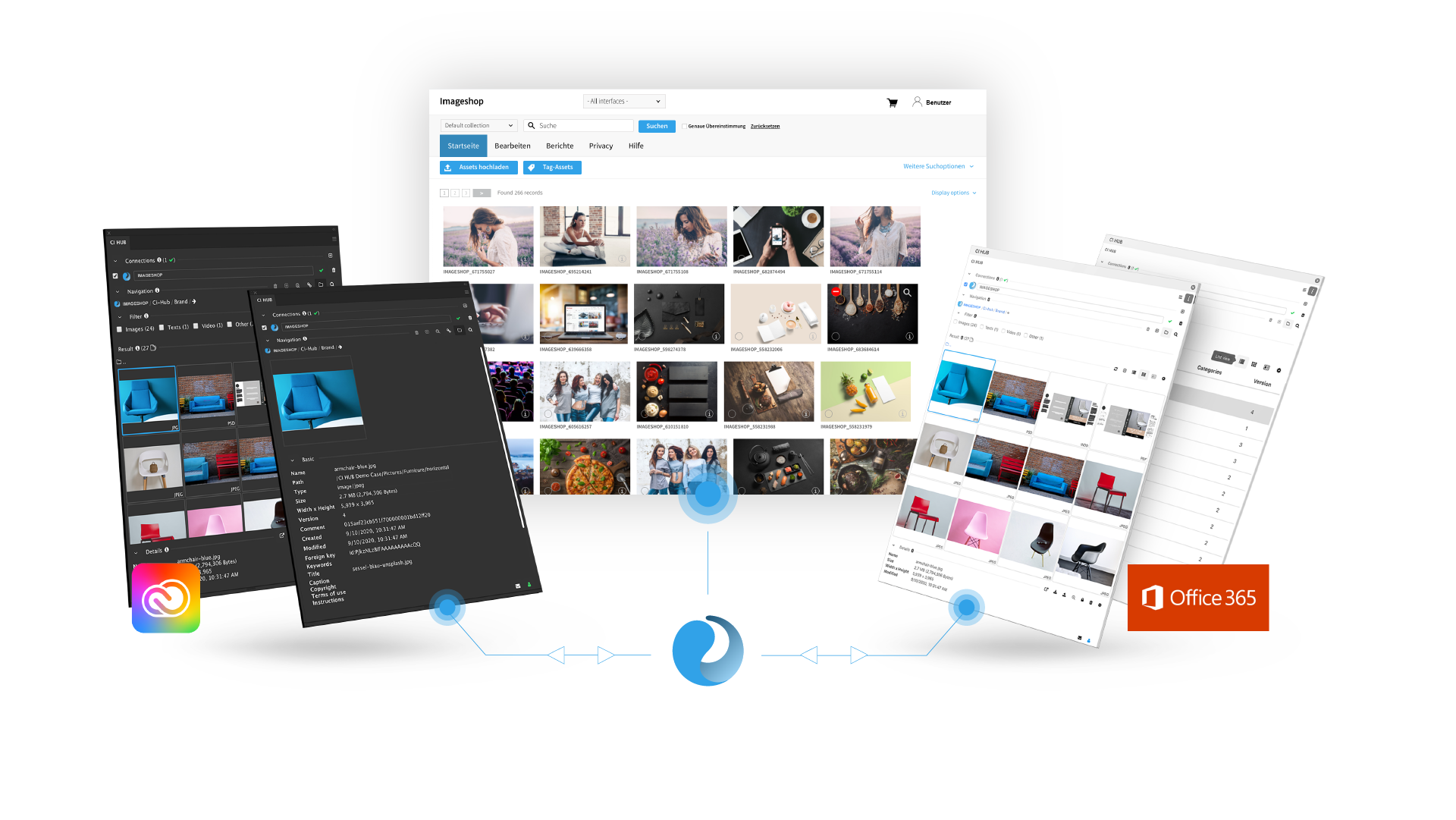Digital Asset Management (DAM) has become a cornerstone of modern businesses’ digital strategies. In an era where the volume of digital content is increasing exponentially and consumer expectations for fast and relevant communication are growing, effective tools for managing digital assets are a necessity.
DAM systems have evolved from simple storage platforms to comprehensive solutions integrating artificial intelligence, security measures, and workflow optimization. As both technology and society continue to progress, so do businesses’ needs and expectations of what a DAM system can offer.
In 2025, we see the emergence of a DAM landscape that is not only more technologically advanced but also smarter, more secure, and tailored to the unique challenges of individual businesses. Against this backdrop, we have identified five key trends that will shape the future of DAM systems, making digital content management more efficient, intelligent, and customized than ever before.
1. Artificial intelligence: From automation to smarter organizing
Artificial Intelligence (AI) is already an integral part of many DAM systems, and its role will continue to evolve in 2025. Previously, AI was primarily used for handling simple automation tasks, but today’s large language models (LLMs) have created new opportunities for utilizing AI in DAM systems.
AI is already employed for tasks such as generating metadata. For example, through image recognition, AI can identify objects and produce keywords for an image. However, as the technology matures and is integrated into DAM systems in new ways, it will be capable of generating more complex metadata. Alt text is a crucial component of publishing images online, and an example of more advanced use of AI is the automatic generation of alt texts. This would ensure that more images on the web have this important attribute.
AI brings a range of benefits that are transforming how digital assets are managed. One of the most significant advantages is increased efficiency. By automating tasks like tagging and metadata editing, businesses can save time previously spent on manual processes, freeing up resources for more strategic activities.
At the same time, the use of AI introduces some challenges. Quality assurance is a major concern, as AI-generated content is not always perfect. Human oversight is still necessary to double-check generated content to ensure it meets accuracy and relevance standards. Over-reliance on technology can also weaken users’ critical judgment, potentially impacting decision-making processes negatively. Therefore, it is essential to use AI as a complement to human expertise, not a replacement.
But overall, we view AI as an exciting area of development that can contribute to efficient and user-friendly solutions for the users of future DAM systems.
2. Seamless integrations: Everything in one place
Businesses often use a variety of digital tools, ranging from office software and design programs to publishing platforms and CMS systems. Integrations are crucial for the usability of DAM systems because they minimize the time spent switching between different tools and streamline the management of a business’s digital assets.
DAM systems have long offered integrations with various tools, but the functionality has varied. As businesses increasingly demand greater efficiency, it will no longer suffice for DAM systems to merely connect to these platforms — they must integrate seamlessly to ensure an efficient workflow.
The future of DAM systems lies in seamless interoperability with other systems, according to Forbes. DAM providers are now prioritizing the development of flexible APIs and extensions that enable deep integrations with popular platforms such as Microsoft Office, Adobe Creative Cloud, and CMS solutions like WordPress. We anticipate more integrations with extended functionality that deliver a seamless user experience.
With seamless integrations, more of the end user’s work within DAM solutions will take place through integrations rather than directly on the DAM systems’ native platforms in the future.
3. Editing and design directly in the DAM systems
Traditionally, DAM systems have simply functioned as digital storage for files. However, file modifications typically required external tools. For instance, users often needed to download images from a DAM system to edit them in graphic design software for creating graphic presentations.
Now, we are witnessing a transition to more feature-rich platforms where users can edit and design content directly within the DAM system. For example, images can be used to create graphic presentations without downloading files into external tools. Template-based solutions enable users to create marketing materials, and since everything happens directly in the DAM system, anyone in the organization with access can easily collaborate on such graphic projects.
This development improves workflows and reduces the need for expensive third-party tools. Integrated editing and design functions in DAM systems also accelerate production time. Users no longer need to export and import files between systems, thereby streamlining workflows and making content creation simpler and more efficient. This transformation positions DAM systems as holistic solutions that not only store but also produce content.Integrated design tools in DAM solutions save businesses both time and money.
And saving time and money is one of the key benefits of a DAM system, according to MediaValet.
4. Safety and privacy: A non-negotiable requirement
In an era of heightened digital threats and increasingly strict regulations, security and privacy have become essential requirements for DAM systems. According to MediaValet, DAM systems are critical for safeguarding digital assets, and we believe that businesses will place greater emphasis on privacy and security when choosing service providers in the future.
DAM providers act as data processors and must ensure that businesses can use their services safely without risking legal issues or reputational damage. They should guarantee data encryption during storage and file transfers, offer advanced access controls to define exactly who can access specific digital assets, and ensure that personal data is securely stored in compliance with applicable privacy laws.
While these topics have long been important for DAM systems, we anticipate the development of new tools to manage and enhance security and privacy, alongside improvements to existing tools. This includes dynamic access permissions that adjust based on the user’s geographical location or time of day, consent management features allowing contributors to grant and revoke permissions for the use of digital assets across different platforms, and automated notifications and unpublishing of files with expired consents.
Artificial intelligence will also play a key role in advancing security and privacy. For example, AI-powered facial recognition can simplify the process of identifying individuals in images stored in a media library, making it easier to obtain consent and remove images lacking proper consent.
5. Personalized solutions
Previously, DAM solutions were often generic with limited customization options, but this is changing. According to Forbes, in the future we will see a shift toward solutions more tailored to individual businesses.
Customizable dashboards and interfaces will allow companies to achieve their desired visual appearance. Tailored modules will enable businesses to pay only for the features they need while offering a broader range of functionalities. Furthermore, interfaces, modules, storage, and integrations will become dynamic, allowing businesses to adjust their DAM solutions as needed.
This approach transforms DAM from a standardized storage tool into a dynamic, strategic resource for innovation, efficiency, and collaboration.
An exciting year for DAMs – An exciting year for Imageshop
The year 2025 will bring a heightened focus on smarter technology, seamless integration, built-in functionality, and personalization. For businesses embracing these trends, there are significant opportunities to enhance efficiency, strengthen security, and generate more value from their digital assets.
At Imageshop, we are stepping into the new year ready to tackle these challenges. We have long prioritized security and privacy, our AI solutions are continuously evolving, and our modular DAM solution enables businesses to tailor their image bank to their specific needs. And soon, we’ll unveil our own template editor, allowing users to design marketing content directly within our DAM solution.
2025 promises to be an exciting year. Happy New DAM Year!






